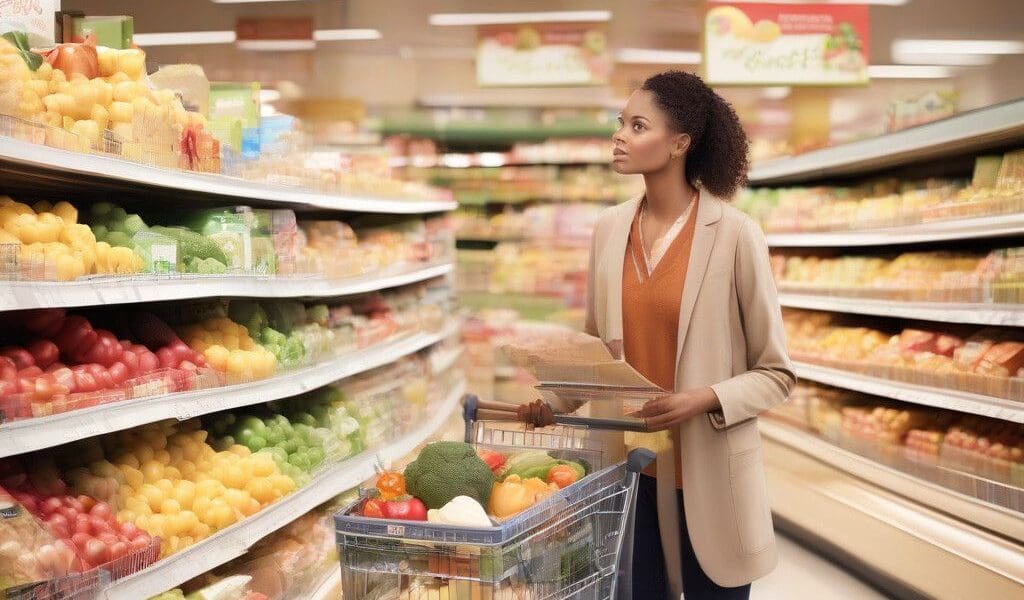As grocery prices remain a focal point of discussion—especially highlighted during the recent presidential debate on September 10—the latest statistics from the Bureau of Labor Statistics (BLS) present a mixed bag. The overall Consumer Price Index (CPI), a primary measure of inflation, rose by only 0.2% from July to August, maintaining the same minimal increase as the previous month. The CPI for food bought at home remained unchanged during this period, while prices for meals consumed away from home increased by 0.3%. Year-over-year, prices for food at home are up by 0.9%, contrasting sharply with the 4% increase for food away from home and an overall CPI rise of 2.5%.
Despite these relatively stable figures, it is important to note that grocery prices are still approximately 20% higher than they were in 2019. This statistic is increasingly relevant, especially when politicians debate the affordability of food. Andy Harig, Vice President of tax, trade, sustainability and policy development at FMI – The Food Industry Association, emphasized that affordability is crucial for grocers, and he advocated for discussions grounded in data rather than political rhetoric.
Analyzing the latest data, some grocery sectors have seen notable price changes. For example, the CPI for meats, poultry, fish, and eggs saw an increase of 0.8% in August, largely driven by a dramatic 4.8% rise in egg prices. Conversely, the indices for nonalcoholic beverages and fruits and vegetables fell by 0.7% and 0.2%, respectively.
Retailers continually navigate tight profit margins—only 1.6% last year. The food sector is rife with competition, pushing brands to tackle inflation proactively while striving to keep prices manageable. Harig remarked that while these inflation statistics are somewhat reassuring, they reflect a backdrop of significant economic pressures that raise food production costs and logistical expenses.
The restaurant industry is also feeling the impact of inflation. Limited-service meals recorded a price increase of 0.3% in August, while full-service meal prices rose by 0.2%. As consumers reconsider their meal choices in light of rising costs, diners appear more cautious than ever.
Nikki Baird, VP of strategy and product for Aptos Retail, offered insight as we approach the fall sales season. She noted that consumer behavior has shifted; although American consumers show resilience, they are now more selective in their purchasing decisions. This presents a challenge for retailers who must balance investments in areas such as labor, technology, and the overall customer experience against a backdrop of economic uncertainty. Baird warned against the tendency to delay necessary updates that could enhance the shopping experience.
Polling data further underscores consumer anxiety in today’s market. Research from Ipsos indicates that, despite decreasing inflation rates and a drop in unemployment, consumer confidence remains low. A recent U.S. Federal Reserve survey revealed that respondents expect inflation rates to average 3% within the next year and approximately 2.8% over the next five years.
As grocery retailers strategize for the future, they must remain vigilant and adaptable to consumer needs as well as economic trends. Investing in technology and refining the customer shopping experience are paramount in maintaining a competitive edge. In an environment where consumers face persistently high prices and limited budgets, brands that emphasize value alongside quality may better position themselves for success.
As the grocery landscape evolves, the interplay of consumer behavior, inflation, and strategic investment will prove critical for retailers striving to maintain profitability while meeting customer expectations. Ensuring a data-driven approach, rather than a politically charged debate, can lead to more fruitful solutions for both consumers and suppliers alike.











